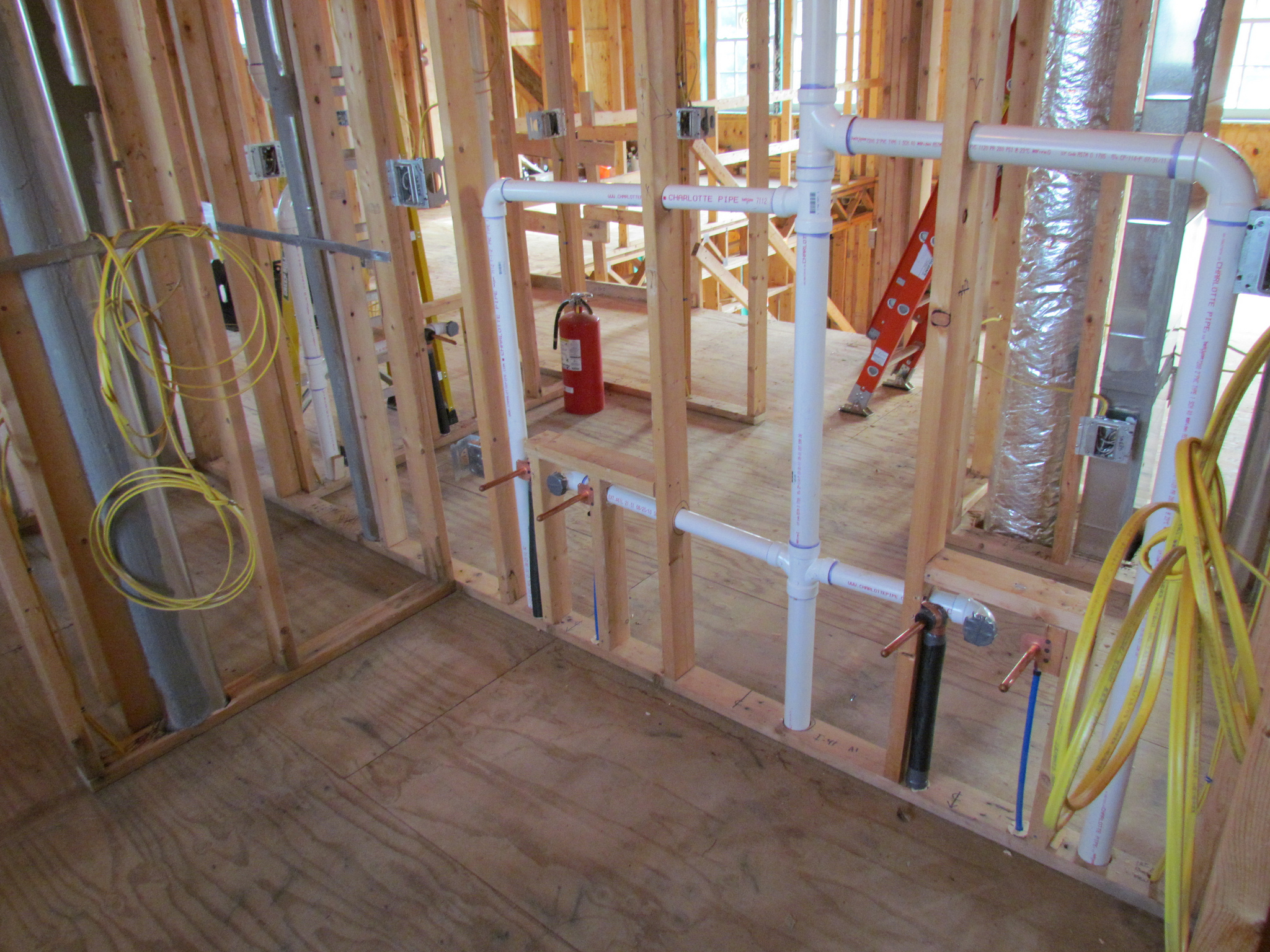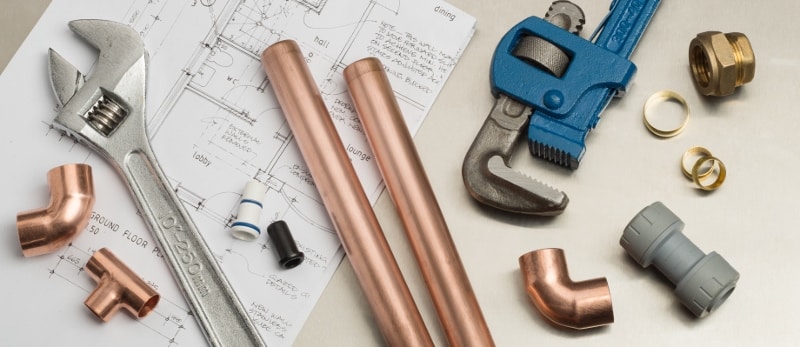A Guide to Your Property's Plumbing System Anatomy
A Guide to Your Property's Plumbing System Anatomy
Blog Article
How do you feel when it comes to The Inner Workings of Your Home's Plumbing?

Recognizing how your home's pipes system works is vital for each home owner. From delivering clean water for alcohol consumption, food preparation, and bathing to safely getting rid of wastewater, a well-maintained plumbing system is vital for your family's health and wellness and convenience. In this thorough guide, we'll check out the complex network that comprises your home's pipes and deal tips on maintenance, upgrades, and managing usual concerns.
Intro
Your home's plumbing system is more than simply a network of pipelines; it's an intricate system that ensures you have accessibility to tidy water and reliable wastewater removal. Knowing its elements and exactly how they interact can aid you prevent costly repair work and make sure every little thing runs efficiently.
Standard Components of a Plumbing System
Pipes and Tubing
At the heart of your plumbing system are the pipes and tubing that bring water throughout your home. These can be made from different products such as copper, PVC, or PEX, each with its benefits in regards to longevity and cost-effectiveness.
Components: Sinks, Toilets, Showers, etc.
Fixtures like sinks, toilets, showers, and bathtubs are where water is used in your home. Understanding how these fixtures connect to the plumbing system helps in diagnosing problems and planning upgrades.
Valves and Shut-off Points
Valves regulate the circulation of water in your pipes system. Shut-off shutoffs are vital throughout emergency situations or when you need to make repair work, enabling you to isolate parts of the system without interrupting water flow to the entire house.
Supply Of Water System
Main Water Line
The main water line connects your home to the municipal water supply or an exclusive well. It's where water enters your home and is dispersed to numerous components.
Water Meter and Pressure Regulator
The water meter measures your water use, while a stress regulatory authority guarantees that water flows at a safe stress throughout your home's pipes system, stopping damage to pipes and components.
Cold Water vs. Warm water Lines
Comprehending the distinction in between cold water lines, which provide water directly from the main, and warm water lines, which lug heated water from the water heater, aids in troubleshooting and preparing for upgrades.
Drain System
Drain Pipes Pipeline and Traps
Drain pipelines bring wastewater far from sinks, showers, and bathrooms to the sewer or sewage-disposal tank. Traps stop sewer gases from entering your home and likewise trap particles that could trigger clogs.
Ventilation Pipelines
Ventilation pipelines allow air right into the drainage system, stopping suction that could slow down drain and cause catches to empty. Correct air flow is important for keeping the stability of your plumbing system.
Value of Proper Drain
Making certain appropriate drainage prevents back-ups and water damage. On a regular basis cleaning up drains pipes and preserving catches can avoid pricey repair services and extend the life of your pipes system.
Water Heating System
Kinds Of Water Heaters
Water heaters can be tankless or traditional tank-style. Tankless heating units warmth water on demand, while storage tanks store heated water for immediate usage.
Upgrading Your Plumbing System
Factors for Updating
Upgrading to water-efficient fixtures or replacing old pipelines can boost water quality, decrease water expenses, and raise the worth of your home.
Modern Plumbing Technologies and Their Benefits
Check out modern technologies like clever leak detectors, water-saving toilets, and energy-efficient water heaters that can conserve cash and lower ecological impact.
Cost Considerations and ROI
Determine the upfront expenses versus lasting savings when considering plumbing upgrades. Several upgrades pay for themselves through minimized energy bills and fewer repair services.
Just How Water Heaters Connect to the Plumbing System
Recognizing just how water heaters link to both the cold water supply and warm water circulation lines aids in detecting concerns like not enough hot water or leaks.
Upkeep Tips for Water Heaters
Consistently flushing your water heater to eliminate debris, examining the temperature settings, and examining for leakages can prolong its life-span and improve energy efficiency.
Typical Pipes Problems
Leakages and Their Reasons
Leakages can take place due to aging pipes, loose installations, or high water stress. Addressing leaks quickly avoids water damages and mold and mildew development.
Obstructions and Blockages
Clogs in drains and toilets are frequently triggered by flushing non-flushable products or an accumulation of grease and hair. Utilizing drain screens and being mindful of what decreases your drains can avoid blockages.
Indications of Plumbing Problems to Watch For
Low water pressure, slow drains pipes, foul odors, or abnormally high water costs are indicators of prospective pipes issues that ought to be dealt with promptly.
Pipes Upkeep Tips
Normal Assessments and Checks
Arrange annual plumbing inspections to capture issues early. Look for signs of leakages, deterioration, or mineral accumulation in faucets and showerheads.
DIY Maintenance Tasks
Straightforward jobs like cleansing faucet aerators, checking for commode leakages utilizing dye tablets, or shielding revealed pipes in chilly environments can stop major plumbing concerns.
When to Call an Expert Plumbing
Know when a plumbing concern calls for expert proficiency. Attempting complex fixings without appropriate knowledge can lead to more damages and higher repair expenses.
Tips for Reducing Water Use
Easy habits like dealing with leakages promptly, taking much shorter showers, and running full loads of washing and recipes can conserve water and reduced your utility bills.
Eco-Friendly Plumbing Options
Take into consideration sustainable pipes materials like bamboo for floor covering, which is durable and environmentally friendly, or recycled glass for counter tops.
Emergency situation Preparedness
Actions to Take Throughout a Plumbing Emergency situation
Know where your shut-off shutoffs are located and how to switch off the supply of water in case of a ruptured pipe or significant leak.
Relevance of Having Emergency Get In Touches With Handy
Maintain contact info for local plumbing technicians or emergency solutions readily available for fast reaction throughout a plumbing dilemma.
Environmental Effect and Preservation
Water-Saving Fixtures and Devices
Installing low-flow taps, showerheads, and commodes can considerably lower water usage without compromising efficiency.
DIY Emergency Situation Fixes (When Applicable).
Temporary repairs like making use of duct tape to spot a dripping pipe or positioning a bucket under a leaking tap can minimize damages until an expert plumbing professional arrives.
Final thought.
Recognizing the anatomy of your home's plumbing system encourages you to keep it efficiently, saving money and time on repairs. By complying with routine upkeep regimens and staying notified regarding modern-day plumbing innovations, you can guarantee your pipes system operates effectively for several years to come.
HOW YOUR PLUMBING SYSTEM WORKS
Which Pipes Do What?
Blue lines = fresh water supply entering the building Red lines = hot water supply entering the building Grey lines = pipes carrying waste away from the building and venting pipes carrying gases away from the building (through the roof) YOUR MAIN PLUMBING SYSTEMS
There are two main plumbing systems that support your home s basic plumbing needs one that brings clean water into your home, and one that sends dirty water away from your home. Connected to the toilet, bath, shower, and other faucets in your home, these two systems keep your water flowing in the right directions.
ACCESSING FRESH WATER
Fresh and clean water is brought into your home through the main water supply line . Filtered through one pipe, this water is pressured to flow into the various fixtures in your home at any given time.
This water can be sourced from a well located on your property, a pond or river (mostly cottages), or, as in most cases, from the city s municipal water treatment centre. However, it is important to note that water that is untreated, such as the water siphoned from ponds or rivers, may not be safe to drink. Personal water supplies always need to be treated for hardness and contaminants before consumed.
MUNICIPAL WATER SUPPLIES
Improve taste and odour Remove sediment Eliminate hardness Reduce chlorine COLD WATER SUPPLY VS. HOT WATER SUPPLY
Cold water flows into your home or building through the service line, which then distributes hot or cold water to your fixtures. This line is most commonly run through a central column that runs floor to floor. Hot water runs in short and straight pipes as the longer the pipeline, the more heat that will be lost in the transfer. Having shorter pipes also allows residents to access hot water more quickly.
WASTE WATER SYSTEM
Your wastewater system is divided into two parts pipes that send wastewater away from your home and venting pipes that send sewer gas away from your home. Sewage water travels through pipes that flush the water and waste towards local sewers that are operated and managed by your city or town. Most sewer systems rely on gravity to move the wastewater to where it needs to go.
The further away from your toilet or sink, the larger wastewater pipes become. This allows for waste to be disposed of from various parts of your home or business at once without pipe blockages. The angle and flow of these pipes are also essential for keeping your waste pipes clear of build up.
https://harrisplumbing.ca/how-your-home-plumbing-system-works/

I was guided to that write-up on Understanding Your Home's Plumbing Anatomy through an acquaintance on our other domain. I beg you take the opportunity to share this entry if you liked it. We truly appreciate your readership.
Go Company Report this page